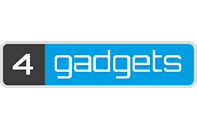WordPress Launches Gutenberg To Make Content Creation Simpler For All
The new Gutenberg visual editor from WordPress aims to make content creation enjoyable, effortless and intuitive – for all users.
Producing good quality, optimised web content is central to achieving a top spot in the search engine rankings. When it comes to creating websites and blog posts, many individual users and businesses (including Freelance SEO Essex) choose WordPress as their preferred content creation platform, thanks to its flexibility, scalability and search engine friendliness.
However, while WordPress is undoubtedly one of the most popular web development systems, it is not without its critics. The current system often requires the use of shortcodes and HTML in order to get the desired styling, and many users feel it lacks the unique and refreshing interfaces found on competitor platforms such as Medium or Ghost. And while many of its competitors have integrated modern, simple and hassle-free editing systems over the years, the WordPress visual editor has never undergone any significant changes.
Until now.
With the aim of making content creation simpler for everyone, WordPress has overhauled its visual editor and launched the new Gutenberg editing system.
Key features
In comparison to the standard WordPress editor, Gutenberg boasts a cleaner design and a simpler interface. With its more minimalist layout, users of the system can enjoy fewer distractions and a larger writing space, especially on smaller screens, which is great news for people writing on laptops or tablets. The editing system itself is based on ‘little blocks’ – pre-constructed modules that enable users to format their content clearly and consistently without requiring advanced programming skills.
The block system and simple layout will be appreciated by both experienced users and beginners in WordPress web design, but this is not the only advantage that the new system offers. Gutenberg also includes a range of useful features, including the ability to create simple tables and responsive text columns (without resorting to plugins or HTML code), drag and drop functionality for images, table of contents and anchor support, new visual styles for cover text and ‘in-block’ HTML previews. It also works well on mobile devices – perfect if you need to edit or post content on the go.
Potential drawbacks
WordPress users have been asking for some of these developments for years, and so far, the feedback from users and tech experts has been largely positive. However, there are also some areas of concern. These concerns are largely focused on compatibility issues with and lack of support for popular plug-ins such as Yoast SEO and Jetpack. Accessibility has also been raised by some as a potential problem for the platform. However, as Gutenberg is still in testing, we would hope that these issues could be ironed out before the new interface becomes standard for all users.
Early stages
As we have already mentioned, the Gutenberg editor is currently in its beta and testing phase with founder Matt Mullenweg hoping to get 100,000 active installs before merging the system into WordPress core. This will enable the development team to work out some of the bugs as well as providing opportunity to integrate user feedback and process requests for new features. To this end, WordPress users are encouraged to download and use the Gutenberg, and provide comments and feedback on its performance.
Despite some potential flaws, the launch of Gutenberg looks set to be a positive development for WordPress and its users, providing a platform that makes the creation of rich content effortless, intuitive and, perhaps most importantly, enjoyable.






















